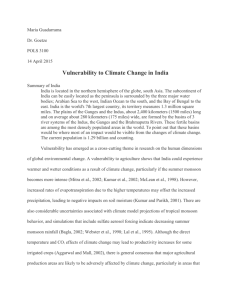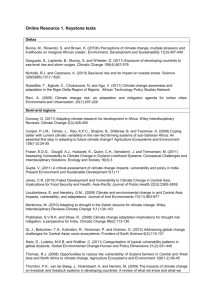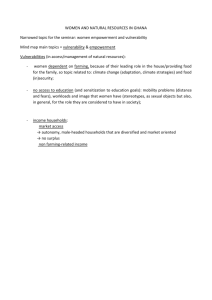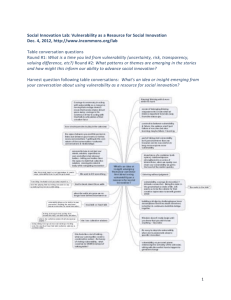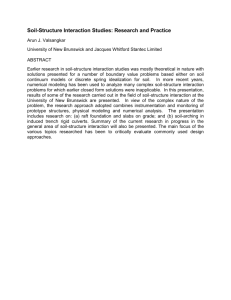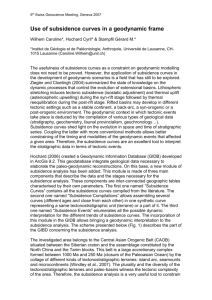soil structure interaction parameters are then
advertisement
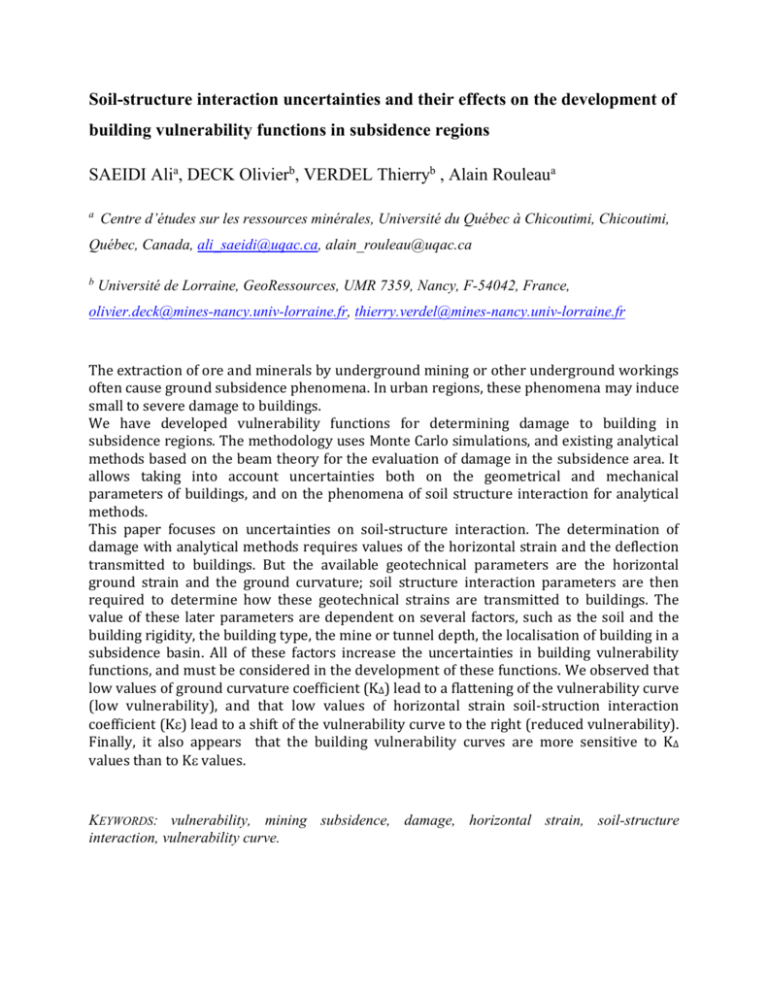
Soil-structure interaction uncertainties and their effects on the development of building vulnerability functions in subsidence regions SAEIDI Alia, DECK Olivierb, VERDEL Thierryb , Alain Rouleaua a Centre d’études sur les ressources minérales, Université du Québec à Chicoutimi, Chicoutimi, Québec, Canada, ali_saeidi@uqac.ca, alain_rouleau@uqac.ca b Université de Lorraine, GeoRessources, UMR 7359, Nancy, F-54042, France, olivier.deck@mines-nancy.univ-lorraine.fr, thierry.verdel@mines-nancy.univ-lorraine.fr The extraction of ore and minerals by underground mining or other underground workings often cause ground subsidence phenomena. In urban regions, these phenomena may induce small to severe damage to buildings. We have developed vulnerability functions for determining damage to building in subsidence regions. The methodology uses Monte Carlo simulations, and existing analytical methods based on the beam theory for the evaluation of damage in the subsidence area. It allows taking into account uncertainties both on the geometrical and mechanical parameters of buildings, and on the phenomena of soil structure interaction for analytical methods. This paper focuses on uncertainties on soil-structure interaction. The determination of damage with analytical methods requires values of the horizontal strain and the deflection transmitted to buildings. But the available geotechnical parameters are the horizontal ground strain and the ground curvature; soil structure interaction parameters are then required to determine how these geotechnical strains are transmitted to buildings. The value of these later parameters are dependent on several factors, such as the soil and the building rigidity, the building type, the mine or tunnel depth, the localisation of building in a subsidence basin. All of these factors increase the uncertainties in building vulnerability functions, and must be considered in the development of these functions. We observed that low values of ground curvature coefficient (KΔ) lead to a flattening of the vulnerability curve (low vulnerability), and that low values of horizontal strain soil-struction interaction coefficient (K) lead to a shift of the vulnerability curve to the right (reduced vulnerability). Finally, it also appears that the building vulnerability curves are more sensitive to KΔ values than to K values. KEYWORDS: vulnerability, mining subsidence, damage, horizontal strain, soil-structure interaction, vulnerability curve.


